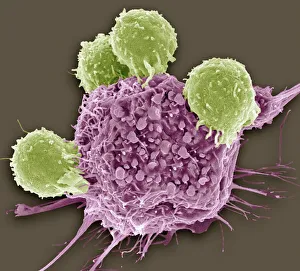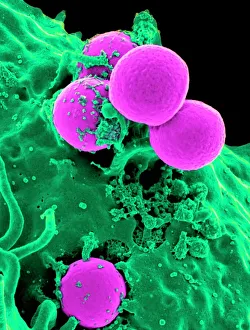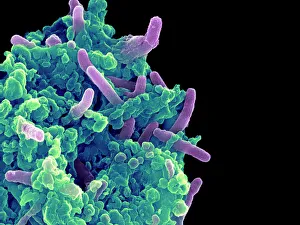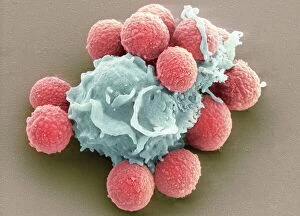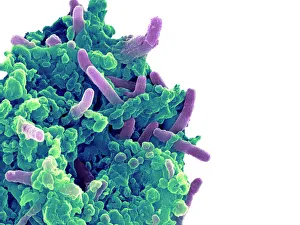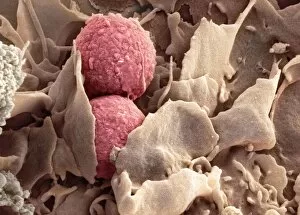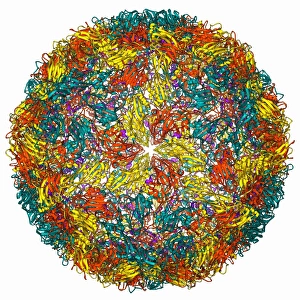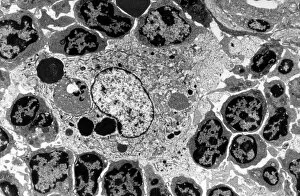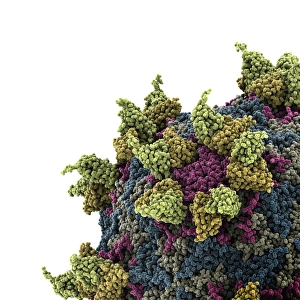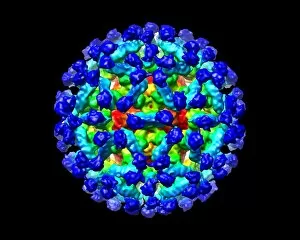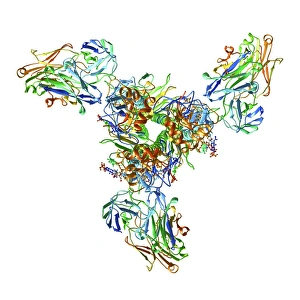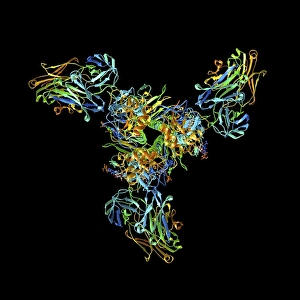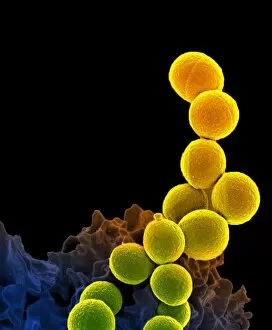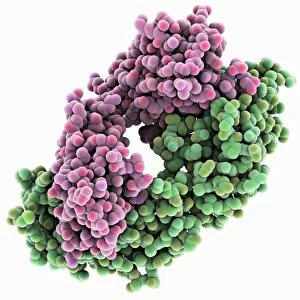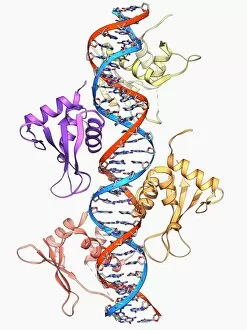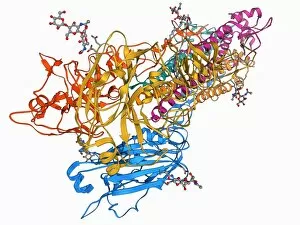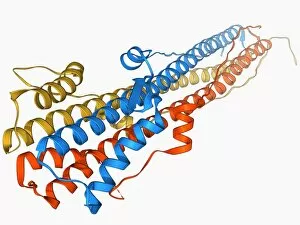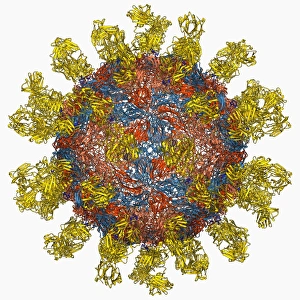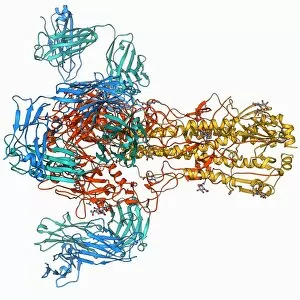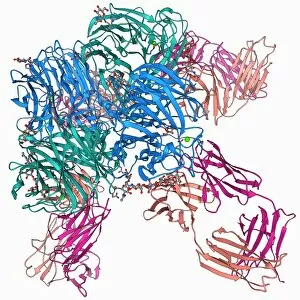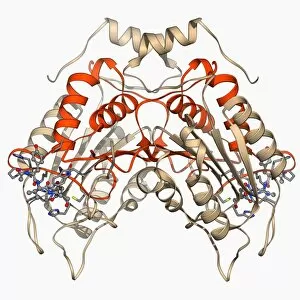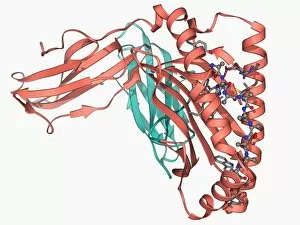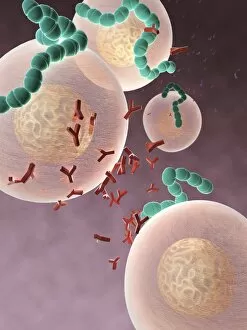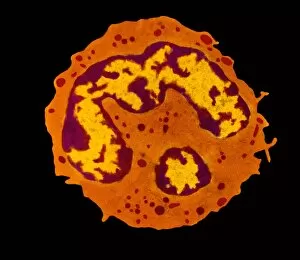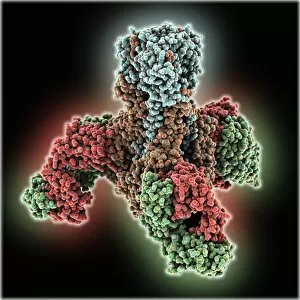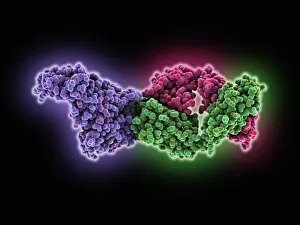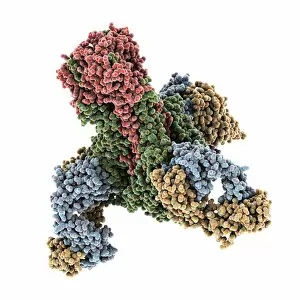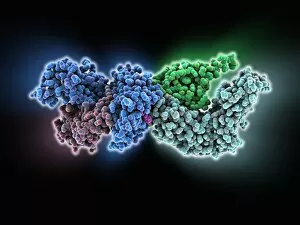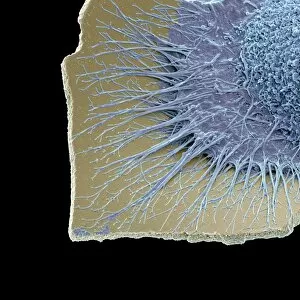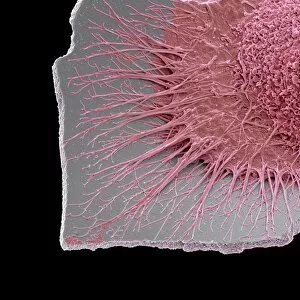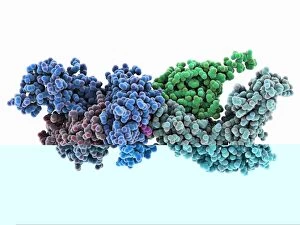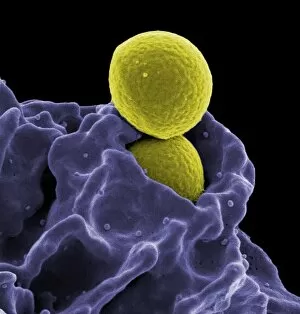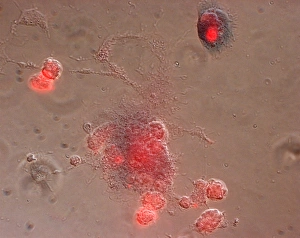Immune Response Collection
"Unleashing the Power of Immune Response: A Battle against Disease" In the microscopic world
All Professionally Made to Order for Quick Shipping
"Unleashing the Power of Immune Response: A Battle against Disease" In the microscopic world, a remarkable defense mechanism unfolds as T lymphocytes take on cancer cells, depicted in stunning detail by SEM C001 / 1679. These vigilant warriors tirelessly seek out and destroy malignant invaders, offering hope in the fight against this devastating disease. Meanwhile, another fierce warrior emerges as a neutrophil engulfs MRSA bacteria with astonishing precision, captured magnificently through SEM C018 / 8596. This powerful immune cell demonstrates its ability to neutralize dangerous pathogens that threaten our well-being. However, not all battles end swiftly. Bacteria infecting macrophages is an ongoing struggle showcased by striking SEM imagery. Witness these tenacious microbes infiltrating and exploiting host cells while our immune system fights back relentlessly. Phagocytosis takes center stage once again as fungal spores fall victim to its gripping power under the watchful eye of SEM technology. The intricate process of engulfment reveals how our body's defenders eliminate potential threats before they can wreak havoc within us. The war rages on with rhinovirus attempting to invade our respiratory system only to be met head-on by antibodies represented in molecular model C015 / 7139. This captivating image showcases the intricate dance between pathogen and defender at a molecular level - a testament to nature's complexity. As we delve deeper into this microscopic realm, phagocytosis reappears vividly capturing fungus spores being devoured under SEM scrutiny. Our immune arsenal leaves no stone unturned when it comes to safeguarding us from harm. Foot-and-mouth disease virus F006 / 9556 serves as yet another reminder of the constant battle fought within us daily. However formidable these adversaries may seem, our immune response stands ready to confront them head-on with unwavering determination. A glimpse into TEM imagery reveals macrophages collaborating harmoniously with lymphocytes, forming an unbreakable alliance against invading pathogens.

